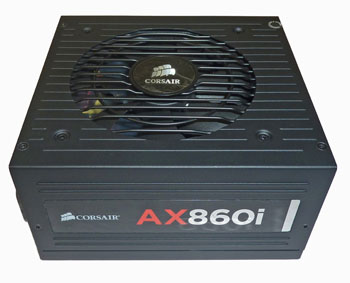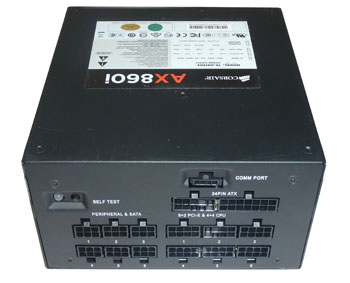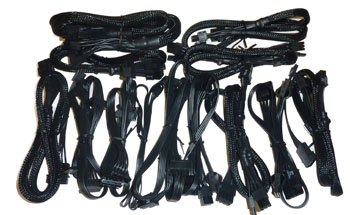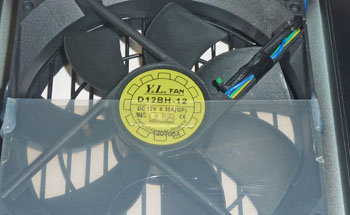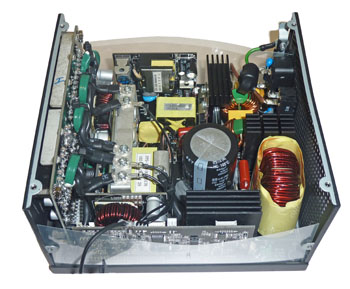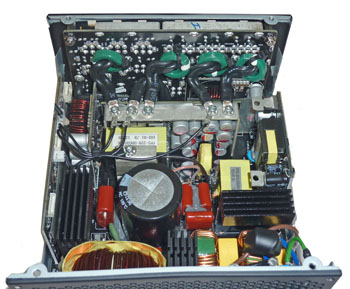A chip off the old block
Jumping on the back of releasing its best-ever power-supply unit (PSU) with the AX1200i 'Digital' back in August, Corsair is now filling out the premium range by offering the same technology in cheaper, smaller capacities.
Today sees the availability of the Professional Series AX760i and AX860i models priced at £160 and £175, respectively, and they're primed to replace the incumbent AX650/750/850 (non-I) mid-wattage PSUs that have been the go-to supplies for quality PC builds.
All about I
So why two new PSUs when the present AX-series does well in almost every test? Corsair says it improves upon the previous generation in two manifest ways. Efficiency is raised from 80 PLUS Gold to 80 PLUS Platinum, meaning the fully-modular AX760i and AX860i are at least two per cent more efficient across a wide-load range. Secondly, a major improvement of the AXi rests with the 'digital' nature of how Corsair goes about delivering clean, consistent power at all times. Let's explain some more.
Though bearing similarities with the architecture employed in the non-I version - we believe both to be manufactured on behalf of Corsair by Flextronics - the all-new AXi adds what the firm calls digitally-controlled power.
Most PSUs use a series of analogue components to mete out the necessary voltage, ripple regulation and efficiency, with better supplies able to keep closer to the ideal - meaning perfect voltage under load and near-perfect suppression of AC input - than cheaper ones, as this is literally what you're paying for once capacity has been decided.
Just like their bigger brother, the mid-wattage AXi PSUs replace some of these parts with a digital signal processor (DSP) whose job is the same, that is, to regulate the voltage and ripple, ensuring it's as close to perfect as possible. Corsair claims that the AXi PSU's DSP, by actively measuring a glut of data and using a feedback system, on-the-fly, is able to keep DC 12V output regulation to +/- 1.5 per cent. Doing so better compensates for any sudden DC drops with immediate rectification. Corsair also believes this new design helps suppress noisome ripple to just one-third of the level mandated by the ATX specification.
Point is, AX760i/860i purport to offer better voltage regulation, ripple suppression, and efficiency than the previous class-leading supplies from the company. And the geeks amongst you will appreciate that having a digital processor enables these supplies to spit out data to the PC via what's known as the Corsair LINK interface.
AX860i
The AX860i measures a compact 160mm x 150mm x 86mm (WxDxH) and, befitting a high-end PSU, is fully-modular in design. This means that all cables, which are bundled in a nicely-presented bag, need to be connected separately; you only attach what's needed. Understanding that high efficiency figures automatically translate to low operating temperatures - there's less heat to wick away - Corsair substitutes the 140mm fan on the AX1200i for a Yate Loon 120mm fan, and though it can spin up to 3,000RPM at full chat, the on-board controller ensures it never goes this high. More on that later.
Corsair, too, keeps the semi-fanless, silent mode adopted by premium PSUs of late. Particular to this model, the fan remains switched off until load ramps up to above 20 per cent of capacity. The fan's speed then rises slowly as load is further increased. Putting a real-world spin on it, our high-end testing rig, powered by an Intel Core i7-3770K chip and GeForce GTX 680 GPU fully-built into a chassis, consumes less than 250W when playing the latest games, meaning the supply should be near-silent most of the time.
The connectors also receive a makeover in the transition between AX850 and AX860i. Now arranged over three rows and sensibly grouped together, there are 14 plugs - two fewer than the AX1200i - plus a COMM port for linking the supply to the PC via the aforementioned LINK interface. There's also a self-test button, new on this wattage model, which confirms the PSU is running to specification; you see a green light if everything's working just as it should.
Filling 14 connectors takes some doing, so here's a table explaining just how you can make best use of the AX860i:
| Cables | Cables, type, length, plugs on cable | |||||||
|---|---|---|---|---|---|---|---|---|
| Main | 20+4-pin (61cm) | |||||||
| ATX/EPS | P4+P4 (65cm) x2 cables (2) | PCIe | 6+2-pin (60cm-75cm) x6 cables (6) | |||||
| Peripheral 1 | 4x SATA (70cm) x2 cables (8) | |||||||
| Peripheral 2 | 4x SATA (85cm) x1 cable (4) | |||||||
| Peripheral 4 | 4x Molex (75cm) x2 cables (8) | Peripheral 5 | Floppy (100cm) x 2 cables (2) | |||||
Six separate PCIe, eight Molex, and 12 SATA are enough to power all but the craziest of builds. AX860i loses out on four SATA and four Molex plugs when compared to the AX1200i, but that's no deal-breaker in our opinion. Peripheral cables are flat and malleable, while the PCIe and main power cables are sleeved; all are of decent length. Corsair also bundles in the LINK cable required for reporting the DSP-provided values.
There's little reason to change a winning formula, evidently, so Corsair/Flextronics simply pares-down the components used in this upper-mainstream model. Compared to AX1200i, a Panasonic hold-up capacitor is removed, though the remaining one is beefed-up to provide 680µF at 420V (AX1200i has two 470µF at 450V). Corsair, however, keeps the same control board and DC-to-DC topology for the minor rails. AX860i's top-notch EMI filtering, solid engineering and above-average soldering continue the good work laid down by the bigger, more expensive AX1200i.
The numbers
Amps/watts and voltage |
3.3V |
5V |
12V1 |
-12V |
-5VSB |
|||
|---|---|---|---|---|---|---|---|---|
Rail amps |
25A |
25A |
71.6A |
0.8A |
3A |
|||
Maximum rating |
125W |
859.2W |
9.6W |
15W |
||||
Maximum rating continuous |
860W @ 50°C ambient |
|||||||
Practically all of the supply's power can be shunted down the 12V line and, as expected, the AX860i is able to dole out its full capacity at an ambient 50°C. Backed by a seven-year warranty, think of the AX860i as, literally, a scaled-down version of the impressive AX1200i.






